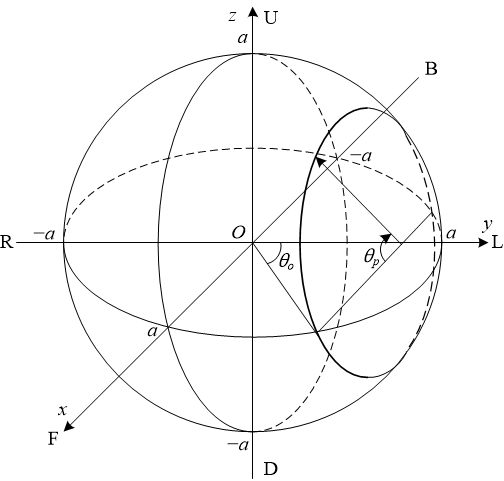Pinna Scattering Effect Filter
This document describes details of pinna scattering effect filter. It outputs convolution of an input and impulse response that represents scattering by the pinna, then enables senses of front-back and upward-downward directions. However, similar to conventional binaural sound processors, it rarely creates a sense of front distance. Therefore, SoundObject makes possible senses of front-back and upward-downward distances by reflected waves in a reverberation room. Finally, this document describes the evaluation of pinna scattering effect filter then clarifies that it enables senses of front-back and upward-downward directions and reflected waves make possible clearer senses of distances.
1. Scattering by a pinna
It is well-known that senses of front-back and upward-downward directions to an acoustic source mainly arise from scattering effects by pinnae (earlobes). Since the average length of a pinna is roughly 60mm, the frequency whose wave length is equal to a pinna length is approximately 5,800Hz, where acoustic speed is 345m/s. Therefore, scattering by a pinna becomes prominent in audio frequency over a few thousand Hz, thus this frequency band is essential to enable senses of front-back and upward-downward directions.
SoundObjcet enables senses of leftward and rightward distance by the sphere scattering effect filter and direction by interaural time and level differences. However, they don't make possible senses of front-back and upward-downward directions. Furthermore, over 3,000Hz, there is no significant difference in the directional characteristics of the sphere scattering effect filter. Therefore, SoundObject assumes that scattering by a head consists of scattering by a rigid sphere and pinnae, thus implements sphere and pinna scattering effect filters independently.
2. Pinna scattering effect filter
Pinna scattering effect filter outputs convolution of an input and impulse response that represents scattering by the pinna. Pinna-related impulse responses of SoundObject are derived from open head-related impulse response (HRIR) databases. The following coordinates system is based on the SOFA specification.
HRIR whose azimuth angles φ = 0 and 180 deg. could be regarded as not including the response to y axial component of the incident wave. In the other azimuth angle cases, HRIR contains the response to y axial component, while it does not impact on senses of front-back and upward-downward directions. Therefore, pinna-related impulse responses of SoundObject are extracted from HRIR databases whose azimuth angles φ = 0 and 180 deg. Furthermore, they are applied to the other azimuth angles.
To apply the impulse responses whose azimuth angles φ = 0 and 180 deg. to the other angle cases, as shown in Fig. 1, pinna scattering effect filter defines θp (−180, 180] deg. as the elevation angle to the acoustic source measured counter clockwise from the x-axis on the plane parallel to the x-z plane and passing through (0, a cos θo, 0).

3. Pinna-related impulse response
Pinna-related impulse responses of SoundObject are extracted from HRIRs of KU 100 and KEMAR dummy heads in SADIE II Database [1] and KEMAR dummy head in high-resolution HRTF data set [2]. Impulse responses, whose azimuth angles φ = 0 and 180 deg. and the sampling frequency is 48KHz, derived from these databases are shown in Fig. 2, where horizontal and vertical axes show time and θp respectively, and green, and red gradations indicate higher and lower values respectively.

Since measurement results of HRIR highly depend on measuring object, method, and instrument, the above responses indicate diverse results. However, distinctive impulse responses concentrated approximately consecutive 24 samples are commonly observed. In 48KHz sampling, the time for 24 samples is 0.5ms. And during this time, a sound wave is propagated 173mm, where acoustic speed is 345m/s. Since the average length of a pinna is roughly 60mm, the above sample number seems sufficient for impulse response representing scattering by a pinna.
Thus, in a 48KHz sampling case, a pinna-related impulse response of SoundObject is consecutive 24 samples extracted from an HRIR. Fig. 3 shows a comparison of frequency responses calculated from 256 and 24 samples in the HRIR data set [2], where elevation angle θp = 0. The result shows that 24 samples could sufficiently represent the frequency response.

4. Evaluation
Similar to conventional convolution-based binaural sound processors, pinna scattering effect filter rarely creates a sense of front distance. Therefore, SoundObject makes possible senses of front-back and upward-downward distances by reflected waves in a reverberation room.
SoundObject could select the output from direct wave and combined waves that consist of direct and reflected waves. Therefore, the pinna scattering effect filter could be evaluated with comparisons of these outputs. As shown in the following video, the former output indicates senses of front-back and upward-downward directions for all azimuth angles. Furthermore, the latter demonstrates a clearer sense of distance.
References
[1] SADIE project, "SADIE II Database," University of York, EPSRC, June 2018.
[2] H. Braren and J. Fels, "A High-Resolution Head-Related Transfer Function Data Set and 3D-Scan of KEMAR," RWTH Aachen University, December 2020.